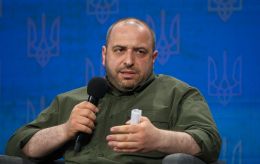Independence Day of Ukraine 2023: Path of struggle for freedom
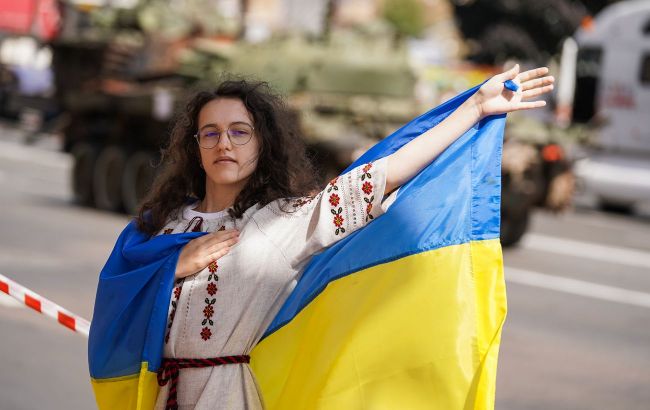 Photo: Ukraine celebrates Independence Day on August 24 (Getty Images)
Photo: Ukraine celebrates Independence Day on August 24 (Getty Images)
Exactly 32 years ago, on August 24, Ukraine declared independence. This historical day followed a long path of struggle. But today, Ukrainians are once again forced to defend their right to live freely in their own land. For the second time, the country's main holiday is taking place in the midst of a full-scale war with Russia.
Key stages of our state's fight for freedom in the material by RBC-Ukraine below.
Key dates in the history of Independence
For 32 years in a row, August 24 has been the most important holiday date in Ukraine. It was on this day in 1991 that the Supreme Council adopted the Act of Independence, marking the creation of an independent Ukrainian state.
However, in reality, this event was a restoration of statehood, as Ukrainians had been fighting for it for many centuries, and independence was first declared on the modern territories of the country at the beginning of the 20th century. Therefore, in addition to August 24, there are several other important dates in the history of national formation:
- January 22, 1918 – Declaration of Independence of the Ukrainian People's Republic (UPR) during the war with the Bolsheviks.
- October-November 1918 – Declaration of the creation of the Western Ukrainian People's Republic (WUPR).
- January 22, 1919 – Approval of the Act of Union of UPR and WUPR.
- June 30, 1941 – In Lviv, the OUN (Organization of Ukrainian Nationalists) declared the Act of Restoration of the Ukrainian State.
- July 16, 1990 – Adoption of the Declaration of State Sovereignty, with July 16 established as the Day of the Declaration of Independence of Ukraine.
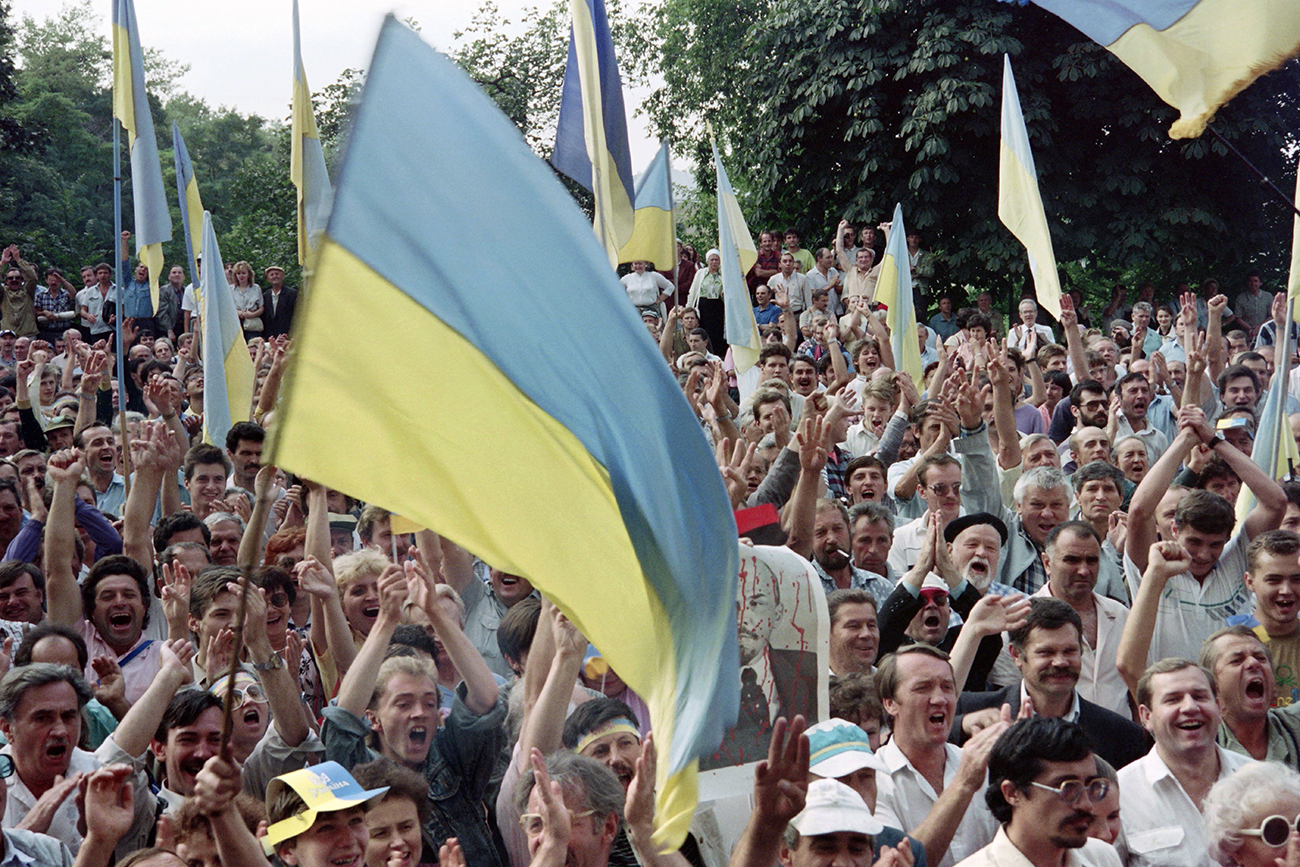
Rally in Kyiv on August 25, 1991, after the adoption of the Act of Independence (photo: Getty Images)
"The first" Independence
The February Revolution in Russia in 1917 served as a catalyst for the development of the national movement in Ukrainian territories. That same year, the Ukrainian People's Republic was established, initially as an autonomy within Bolshevik Russia.
However, on January 22, 1918, the Central Rada of the UPR declared the independence of the Ukrainian state. At this time, the Soviet army was already advancing toward Kyiv with the aim of seizing power.
The Battle of Kruty, fought on the outskirts of the capital, became a significant event. It became a symbol of patriotism and spiritual uplift, although for many years the battle was described as a defeat. Young student volunteers were able to stop the Bolshevik advance for 4 days at the cost of their own lives. During this time, the UPR received international recognition and military aid (the Treaty of Brest-Litovsk), which helped save its statehood.
Later, political changes occurred within the country. As a result of a state coup in April 1918, power passed to Pavlo Skoropadskyi with the support of German troops.
Instead of the UPR, the Ukrainian State (the Second Hetmanate) was created. However, some reforms of the new government and the intention to create a federation with non-Bolshevik Russia led to the Anti-Hetmanate Uprising. In December 1918, the Directorate of the UPR replaced the Hetmanate.
Unification of Ukrainian territories
In the fall of 1918, against the backdrop of the collapse of the Austro-Hungarian Empire in Ukrainian lands that were part of it, the independent Western Ukrainian People's Republic was formed. It encompassed the territories of Eastern Galicia, Bukovina, and Transcarpathia.
On January 22, 1919, on Sofiiska Square in Kyiv, the Directorate of the UPR adopted the Universal of the Directorate of UPR on the unification of UPR and WUPR into a united Ukraine (the Unification Act). However, actual unification did not occur due to differences between the governments of the republics, as well as conflicts with Poland and the Bolsheviks.
Despite protests from WUPR representatives, part of the western Ukrainian territories went to Poland under the Treaty of Warsaw. The Directorate negotiated with the Poles, seeking support in the fight against Russia. However, due to pressure from Bolshevik occupiers, the UPR later lost control over almost all territories. For many years, power passed to the Bolsheviks.
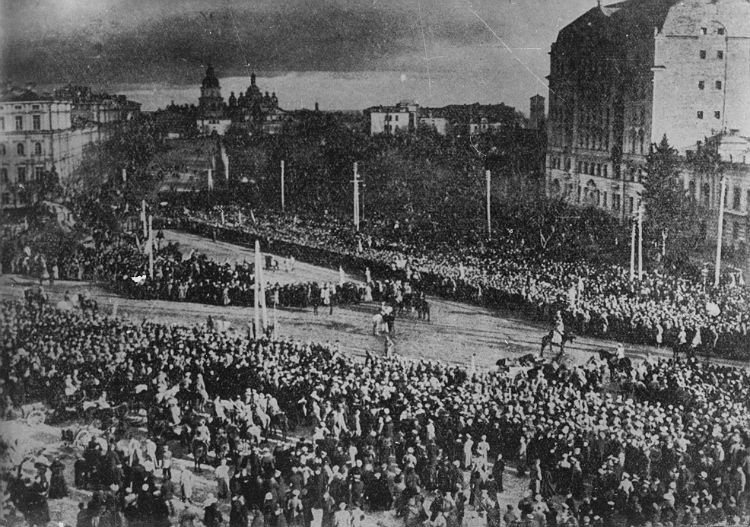
Declaration of the Unification Act on Sofiiska Square in Kyiv, January 22, 1919 (photo: memory.gov.ua)
Restoration of Independence - World War II
The struggle for Ukraine's independence continued even after the establishment of Soviet rule in our lands. In 1920, a Ukrainian military organization was formed from units of the Ukrainian National Republic (UNR) army and the Ukrainian Galician Army. Soon, the Organization of Ukrainian Nationalists (OUN) became its branch.
During World War II, after the withdrawal of Soviet forces on June 30, 1941, in Lviv, the OUN, led by Stepan Bandera, declared the Act of Restoration of the Ukrainian State. However, it lasted only 10 days.
On the same day, German troops entered the city. Adolf Hitler strongly opposed the declaration of Ukraine's independence. The German authorities arrested the leaders of the OUN.
In 1942, the Ukrainian Insurgent Army (UIA), created by members of the OUN, fought against Soviet rule. The nationalist underground of the OUN and UIA operated until the mid-1950s.
On the threshold of modern Independence
The "Human Chain" was a massive event in January 1990 that, for the first time in a long time during the Soviet period, demonstrated Ukrainians' desire for unity and independence.
On the occasion of the 71st anniversary of the Unification Act, people lined up with Ukrainian flags from Ivano-Frankivsk to Kyiv. It stretched for 700 km and gathered from 450,000 (according to official data) to 5 million people.
In the same year, on July 16, the Supreme Council of the Ukrainian Soviet Socialist Republic (UkrSSR) adopted the Declaration of State Sovereignty. The document included provisions on Ukrainian citizenship, proclaiming independence in matters of economy, science, education, culture, and equal rights in foreign relations. According to the Declaration, July 16 was declared a holiday - Independence Day of Ukraine.
Another key event in 1990 was the "Revolution on Granite" of Ukrainian students.

Protesters on Maidan Nezalezhnosti during the "Revolution on Granite" (archive photo from "Smoloskyp" publishing house)
They set up a tent camp on Maidan and announced a hunger strike demanding the resignation of the leadership of the UkrSSR and early multiparty elections. The goal of the action was also to prevent the signing of a new union treaty, as the Declaration of State Sovereignty had already been adopted. The result of the protest was the resignation of the Chairman of the Council of Ministers, Vitalii Masol.
On March 17, 1991, 80% of Ukrainians supported Ukraine's entry into the Union of Sovereign Republics based on the Declaration of State Sovereignty in a referendum.
However, against the backdrop of an attempted coup in the USSR in August 1991, the Supreme Council called an extraordinary session during which it adopted the Act of Declaration of Independence. This decision was supported by the Ukrainian people in a new referendum in December 1991.
"Revolutionary" 2000s
In November 2004, people took to the streets in protest on Maidan Nezaleshnosti due to massive falsifications during the presidential elections. It became known as the "Orange Revolution." Ukrainians managed to secure a rerun of the elections between Yanukovych and Yushchenko. Yushchenko became the head of state, and the Verkhovna Rada adopted changes to the Constitution reducing presidential powers.
In the fall of 2013, massive protests began again in the capital due to the government's decision under Mykola Azarov to suspend Ukraine's European integration process.
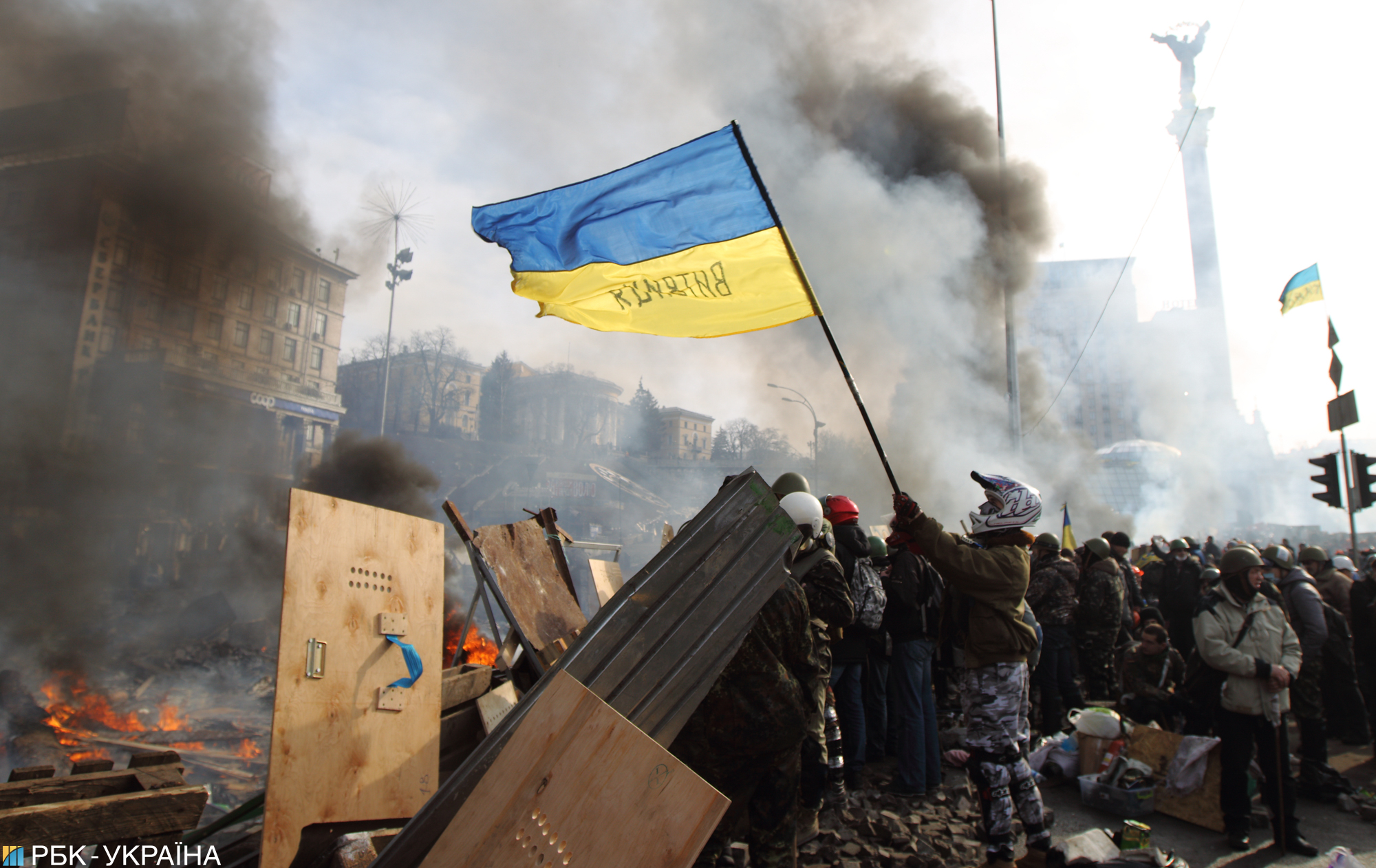
The Revolution of Dignity 2013-2014 (Photo: Vitalii Nosach, RBC-Ukraine)
Security forces brutally dispersed activists, leading to even greater waves of protests.
During the winter of 2013-2014, over a hundred peaceful citizens lost their lives in clashes. The Revolution of Dignity resulted in the fleeing of President Yanukovych and a change of power in Ukraine. Unfortunately, this situation was exploited by Russian aggressors.
Russian invasion
Today marks a year and a half since the start of Russia's full-scale invasion, but the war has been ongoing for a decade.
Tragic events in modern history began with the occupation of the Crimean Peninsula in the spring of 2014. Russia deployed its troops and annexed Crimea, taking advantage of the unstable situation in the country during the Revolution of Dignity.
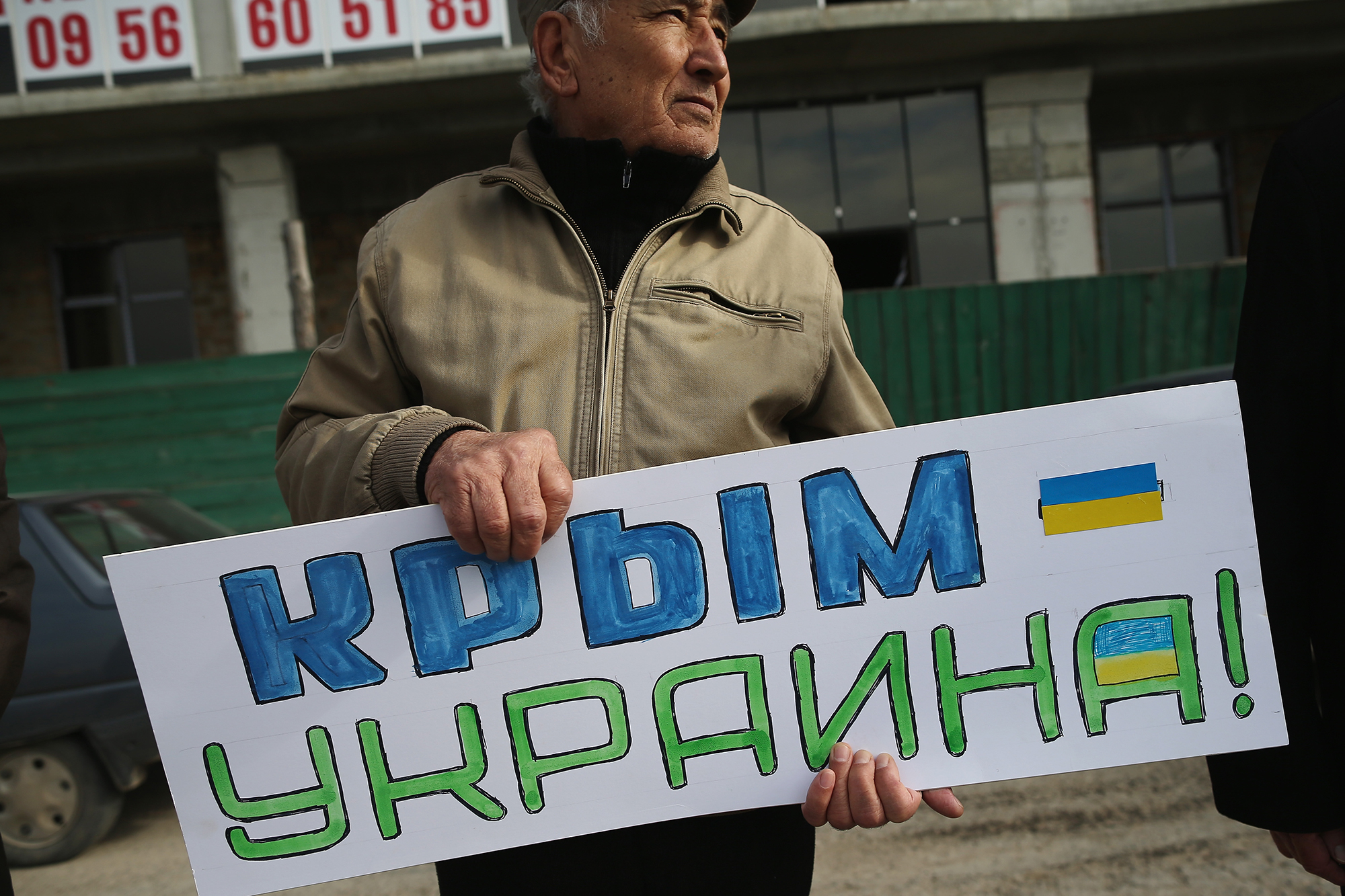
Participant of the rally in Crimea against Russian occupation (photo: Getty Images)
Almost simultaneously with the occupation of Crimea, separatist rallies took place in the eastern regions of Ukraine. With the support of Russian forces, local "militias" seized towns in the Donetsk and Luhansk regions. "Referendums" were held, and the so-called "Donetsk People's Republic" and "Luhansk People's Republic" were declared.
In April 2014, Ukraine initiated an Anti-Terrorist Operation, during which some territories were liberated. Subsequently, negotiations for a ceasefire and a peaceful resolution of the situation in Donbas began, but the conflict did not cease. On February 24, 2022, Russia dared to launch a full-scale invasion with the aim of capturing the entire Ukraine.
In 18 months of a major war, the occupiers failed to achieve their goals. Ukrainian defenders forced the enemy to retreat from Kyiv, prevented the capture of Odesa and Mykolaiv, and recaptured Chernihiv, Sumy, Kharkiv, and Kherson. However, the heroic struggle continues.

